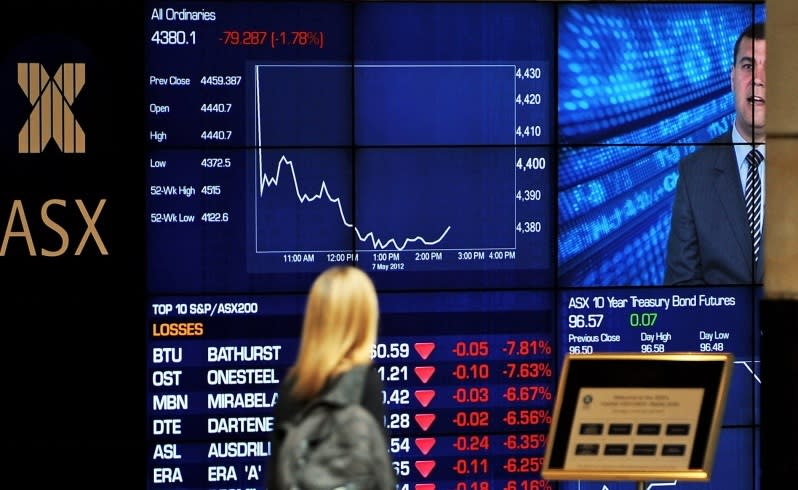Market plunges as banks dive

Investors dumped the major banks, dragging the Australian sharemarket deep into the red to a four-month low after Commonwealth Bank joined Westpac with a disappointing earnings report.
Following a weak lead from Wall Street last night, the S&P/ASX 200 index slumped 134.3 points, or 2.31 per cent, to the day’s low of 5692.2 - it's biggest one-day fall in two years.
About $37 billion was erased from the local sharemarket's value and only energy stocks bucked the weaker trend.
The volume was solid as soaring global and domestic bond yields added to pressure on high-yielding stocks.
The Australian dollar extended its rally against the US dollar, climbing US0.8¢ to US79.60¢ in defiance of the Reserve Bank rate cut yesterday and comments from the board it was “necessary” for the dollar to weaken to support growth.
Government 10-year yields jumped another 15.1 points to a five-month high of 2.95 per cent on the Reserve’s neutral rates bias and in line with the blowout in global bonds with US 10-years climbing 8 points to 2.12 per cent.
“There appeared to be no single theme which could be applied consistently to all the asset classes,” Westpac strategist Imre Speizer said.
“Greece, downgraded US GDP forecasts, and rising oil prices all featured as explanations.”
The US trade deficit widened from $US35.9 billion to $51.4 billion in March, as exports rose 0.9 per cent after falls in the previous four months but imports jumped 7.7 per cent, prompting economists to downgrade March-quarter GDP growth from the already weak 0.2 per cent reported last week.
The Shanghai composite index bounced one per cent at the close of the ASX on stimulus hopes and a report from the official Xinhua news agency that officials would keep the bull market rally going.
Japanese markets were closed for a public holiday.
Spot iron ore climbed 2 per cent to $US58.70 a tonne yesterday and Dalian iron ore futures were up 2.7 per cent today.
Brent crude oil climbed 2 per cent to a five-month high of $US68.30 a barrel.
Commonwealth Bank, Australia’s biggest listed company by market value, was the biggest drag on the broader share market, falling to a four-month low.
"The quarterly result did not excite the market - they wanted more in terms of earnings,” Patersons Securities economist Tony Farnham said.
"God only knows what the issue was."
Commonwealth Bank’s flat $2.2 billion cash profit for March quarter caused its share price to sink by $5.16, or 5.9 per cent, to close at a four-month low of $82.98.
Westpac had lost $1.29, or 3.7 per cent, closing at a seven-month low of $33.99.
ANZ was down 91 cents, or 2.7 per cent, to $33.21 while National Australia Bank shed 97 cents to $35.20, a day ahead of its half year results.
The financial sector was the single biggest drag on the market, losing 3.25 per cent of its value a day after the Reserve Bank lowered the official interest rate to a new record low of two per cent, but gave no indications of any further cuts.
Supermarket giant Woolworths had lost $1.49, or five per cent, to $28.14, hitting a two-week low.
The company will cut 400 jobs, and sales growth of just 0.7 per cent for the quarter ending in April added to the view that it was under-performing and trailing rival Coles, owned by Wesfarmers.
The miners suffered less severe losses, with BHP Billiton down 21 cents to $32.35, Rio Tinto losing 36 cents to $59.12 but iron ore player Fortescue Metals up 12 cents, or 4.9 per cent, to $2.58.
News Corp fell 79 cents, or 3.9 per cent, to $19.41 after Rupert Murdoch’s newspaper group suffered a seven per cent slide in March quarter earnings, with advertisers deserting it.
The broader All Ordinaries index was down 125.3 points, or 2.15 per cent, at 5690.9.
The June share price index futures contract was 144 points lower at 5690.9 with 38,484 contracts traded.
National turnover was 1.8 billion securities worth $5.9 billion.

